ED patient crush logjams health system
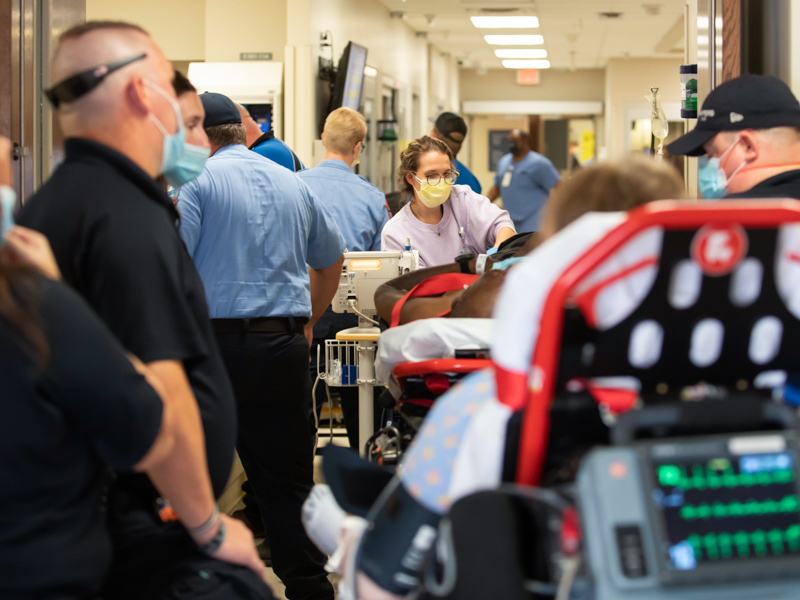
Editor’s note: As of 10 a.m. Thursday, August 19, there were 10 patients in the Emergency Department waiting for an ICU room to become available, nine waiting for a regular room, and three COVID-positive patients en route by ambulance. A couple of the 50 total ED exam rooms were open, but all were expected to be filled before noon. UMMC’s overall COVID-19 patient count as of 8 a.m. Thursday, August 19, stood at 135, with 26 of the adults in the ICU. There were 28 pediatric COVID-19 patients, with eight of those in the ICU. Of all COVID-positive patients, 74 percent are unvaccinated and just 8 percent are fully vaccinated. None of the children 12 and older are vaccinated.
It’s a Tuesday morning in the Emergency Department at the University of Mississippi Medical Center, and four gurneys are lined up end to end just inside the entrance.
Paramedics stay with their patients. They can’t unload them into an exam room bed, a responsibility of ambulance services, because all 50 are full. So are most of the Medical Center’s 15 or so parking places for ambulances.
At 11 a.m., 23 people are “bed boarding,” or admitted, but waiting for a regular floor or intensive care unit bed. On some days, it’s 35 bed boarding, or 40, or more. Emergency Department staff gather at a corner room to put a patient on a ventilator, a frequent occurrence in a busy ED or ICU.
An electronic board mounted on the wall lists patients en route by ambulance or medical helicopter transports. Many are COVID-positive transfers from other facilities, including a young pregnant woman. They’re all labeled “urgent” or “critical” or “high risk.” One was in a car wreck but not wearing a seat belt. Another was a transfer, already intubated.
Don’t be fooled by the relative calm interrupted by equipment beeps and dings, patients on oxygen being pushed across the floor when it’s their turn for a room, or overhead announcements. “Chest X-ray in Trauma 2.” Then, “Possible Code Gray,” a patient who might be having a stroke.
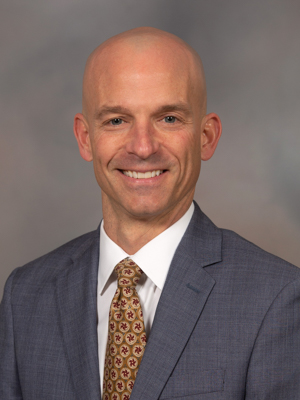
Unvaccinated COVID patients are “having a huge effect,” said Dr. Alan Jones, associate vice chancellor for clinical affairs and former chair of the Department of Emergency Medicine. “We know that 90-plus percent of new infections are unvaccinated. If we didn’t have all those patients to deal with, we wouldn’t be this strained.”
“It’s not quiet. It’s the calm before the storm. Almost every room in this department is full,” said ED technician Hilton Rahaim. He and other caregivers are focused on their patients in the area where COVID patients are observed. It will hit capacity, and the overflow will spill into the rest of the department.
It’s not a disaster waiting to happen.
It’s happening.
*
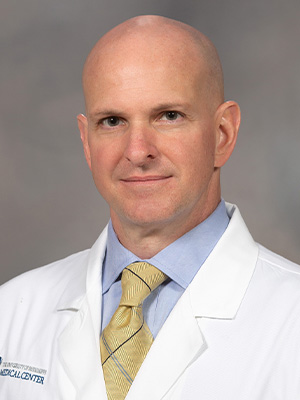
“If you think about the entire state as being one huge health system, trying to function in unison, when your input is more than your capacity, you’re in a disaster situation. That’s what we are experiencing now,” said Dr. Kendall McKenzie, professor and chair of the Department of Emergency Medicine and a veteran battlefield surgeon.
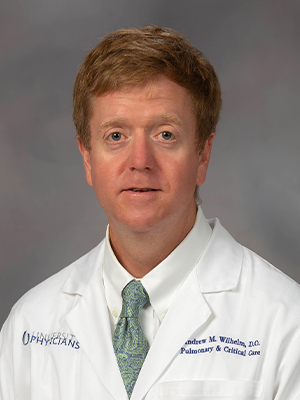
“The Smith County Watermelon Festival. The Neshoba County Fair. The opening of schools without a mask mandate. I’m waiting for that shoe to drop,” said Dr. Andy Wilhelm, division chief of Pulmonary and Critical Care Medicine and a regular presence in the ED, seeing that many of its patients are destined for the ICU.
“That could be the catastrophe that pushes us over. When the ER fills up and we (UMMC’s four ICUs) fill up, it’s a logjam.
At UMMC and other hospitals, there’s a significant nursing shortage that is intersecting with front-line caregivers home sick with COVID – or hospitalized - in record numbers. Those on the job are exhausted, but they’re putting patients and each other first by their very presence.
As the state’s sole Level I trauma center and academic medical center, UMMC has a unique mission: care for the most gravely ill patients, including dozens with COVID-19 whose survival could depend on the state’s highest level of care found only at the Medical Center.
No beds? It’s not that simple.
“When all of the beds are filled up in every ED across the state, and you still have more input into the system, there’s no way to take care of them in a timely fashion to keep them from building up,” McKenzie said.
“People generally believe that emergency care will be available to them when they need it,” Jones said.
“What people need to understand is in situations like this, the ED is a finite resource. You might have a disease process that’s very treatable, but if you can’t get to the treatment you need because of the strain on the health system, you might have a different outcome.”
There’s a domino effect.” It’s a confluence of issues coming together that is creating a massive disaster situation,” McKenzie said.
They include:
- The ED is bed boarding more patients than ever. Exam rooms each contain one bed, and “if you have 35 admitted patients who are boarding, you are trying to run a Level I trauma center out of 15 beds,” McKenzie said. “Sometimes, it’s tighter than that.”
- The Emergency Department’s trauma section has four trauma and six treatment rooms. “When your resuscitation rooms are all filled with very sick people and you have a trauma patient come in who must have a room, there are inherent challenges,” McKenzie said. “Over the past 18 months, our trauma numbers have actually gone up. That adds an additional burden to the system.”
- When ambulances can’t offload patients in the ED, “that means those ambulances aren’t out on the street, able to take 911 calls. And those people can’t get to the hospital because of a lack of ambulances,” McKenzie said.
- The Medical Center can’t accept some requests from hospitals wanting to transfer patients, some with COVID-19, so they can get a higher level of care. “If there’s a need to send a patient here, our philosophy has always been to accept them with open arms,” McKenzie said. “We have not been able to do that to the level we’d like.”
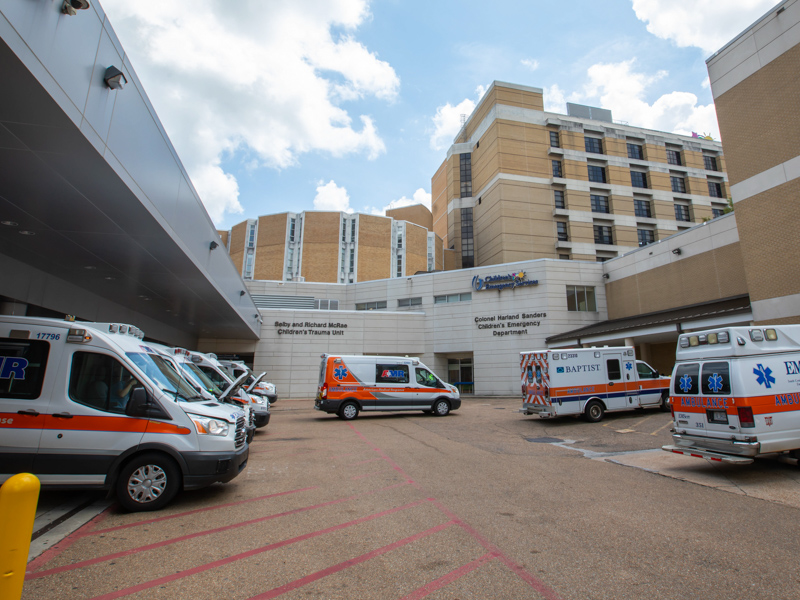
UMMC’s ED never turns away an ambulance. But if a transfer is declined, Jones said, it would be because ER beds are full and the patient doesn’t need UMMC’s unique services. An example would be a patient with a broken leg.
Conversely, when there are no beds, people who need time-sensitive treatment through a higher level of care might not get it, Jones said. “Every hour of every day is different.”
- Because caregivers can’t get to all walk-in patients in a timely fashion, some of them will get frustrated and leave. “We haven’t seen these kinds of waits historically,” McKenzie said. “Some of the people who are leaving need to be in the hospital.”
It's important to note that not all patients who are bed boarding have COVID-19. Some have suffered urgent heart attacks or stroke, gunshot wounds or other trauma. Some might require emergency ventilation. A pregnant mom with COVID-19 might need an emergency C-section.
“People have been putting off medical care for the past 18 months, and their disease processes advance,” McKenzie said. “We are seeing sicker patients than we have historically, and the number of critically ill patients coming into the ED on a daily basis is higher than any other time in our history.”
- Three ED triage beds normally used to assess early on the extent of a patient’s injury or sickness are sometimes repurposed for treatment. The same is true for the family counseling room and a decontamination room for patients who have come into contact with hazardous materials. “We are utilizing as much space as we can, but there are limitations to that,” McKenzie said.
- Front-line providers are more fatigued than ever. “ED personnel are extremely resilient. We pull our pants up, put our shoes on and show up prepared to handle what comes our way,” McKenzie said. “Eighteen months of doing that with very little break, being understaffed while caring for incredibly sick people, is very taxing. We are seeing the ramifications of that on every level.”
Every time the Medical Center reaches a new high on COVID-19 inpatients, “it creates a lot more pressure on the resources, beds and staff,” Jones said.
“Not only do these COVID patients have an impact, they are staying for a longer time, on average two weeks. The effect on the health system is decreased turnover of beds. You become less efficient in managing your capacity issues,” Jones said.
*
“All right! Let’s get some pictures, OK?”
Registered nurse Maria Wilson has just entered the room of a patient in the COVID observation area. He needs encouragement, and she offers it. “I got ya,” she said. “I hear ya.
“No, darlin’. Keep that on,” she says when he touches his oxygen cannula. “We’ve got to take some pictures now. I got you some pain meds. We’re going to go ahead and swab you for COVID, OK?”
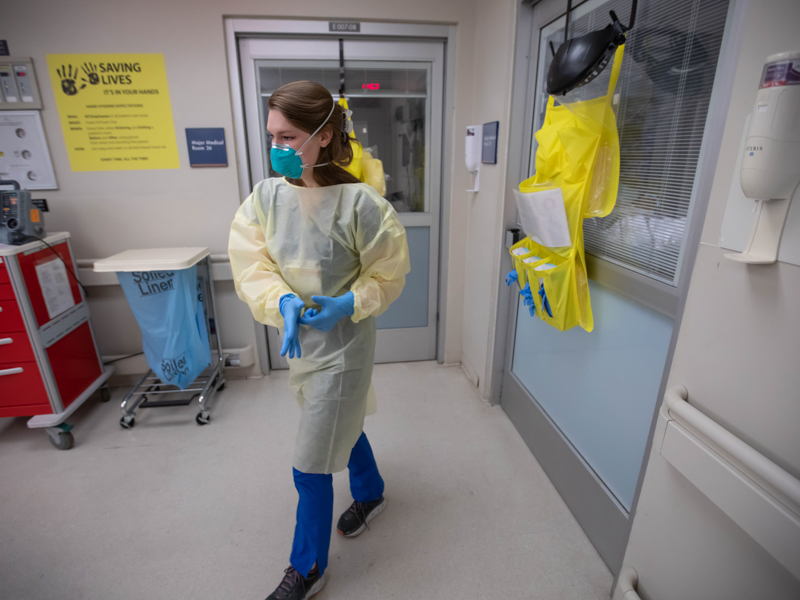
That area was used for chest pain observation pre-pandemic. “If they’re back here, the majority have COVID,” said registered nurse Cindy Wilson. “I had a patient in that room over there a little while ago who was negative on the antigen test, but we’ll get his long test back tomorrow.”
ED staff pack an incredible amount of work into a shift, usually either eight hours or 12. “They’ll ask us to work a 12 instead of an eight if we can stay late and if they need us,” Rahaim said. “We just have so many employees out with COVID.”
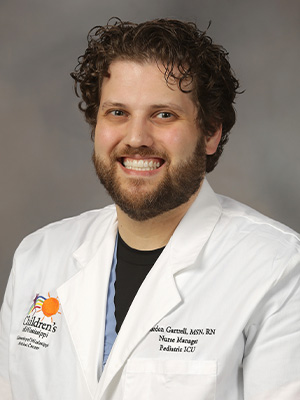
Gordon Gartrell was a veteran ED registered nurse and supervisor before recently being named pediatric ICU nurse manager. This day, he’s back in the ED for a staffer who needs his emotional support. “It’s a nightmare, but we take care of our own,” Gartrell said.
The patients they are seeing are very sick.
“We typically have patients on our wards that in other hospitals might meet the criteria for their ICU,” Wilhelm said. UMMC is helping meet the demand for more beds by opening a second medical ICU with six beds in the area formerly used as a pediatric ICU, he said.
What would happen in the ED if a mass casualty happened in the metro area or out in the state? A horrific bus or plane crash? An explosion or fire? A mass shooting?
It’s a hypothetical that must be discussed and managed, McKenzie and Wilhelm say. “The system is already full. We’d have to be creative,” Wilhelm said.
“The rules of the game would have to change, and our way of managing patients would have to change. The standard of care would not change. We’d be doing our best to provide it.”
“On the days when we are busting at the seams with patients, maybe a waiting room of 40 patients and 35 boarding ... our ability to handle that would definitely be impacted,” McKenzie. “We’d have to attempt to spread the patients to other facilities who are also equally at capacity.
“We might send teams to an alternate site and treat (the injured) there through a more robust triage system before they ever get to the ED. Med-Com and AirCare would be instrumental.”
*
Get vaccinated, everybody.
“The way through this pandemic is through herd immunity. If people are not willing to get vaccinated, we have to hope that natural immunity lasts longer,” Jones said. “If people are not willing to get vaccinated, it could mean thousands and thousands more deaths and hospitalizations.”
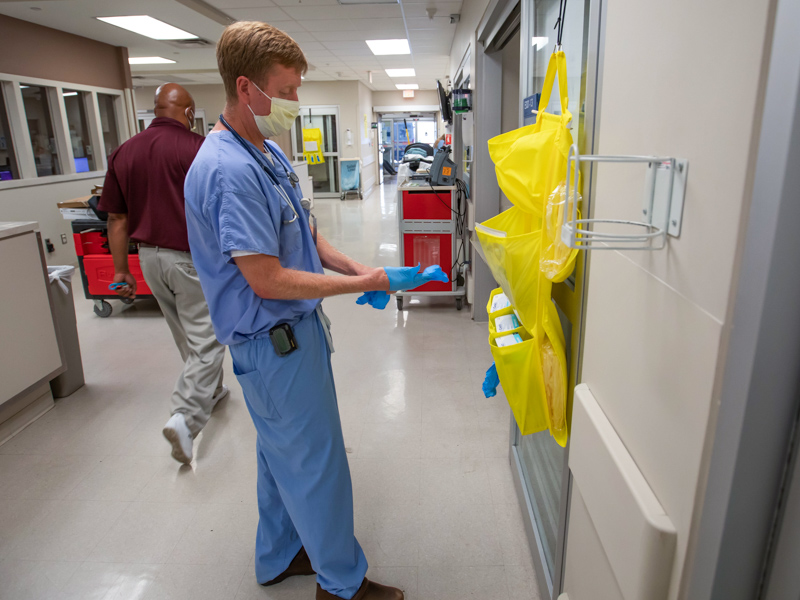
At least 97 percent of patients admitted to UMMC “from a COVID standpoint are not vaccinated,” McKenzie said.
“All of us own this problem in the health care system today. It’s been preached for months – get vaccinated. That’s the bottom line, and it’s stressing the health care system to the breaking point. It’s as simple as getting a shot in the arm.”
As the number of Mississippians testing positive grows by the thousands, so does the urgency for the state to increase an overall vaccine percentage that doesn’t even hit 40 percent.
“That’s why it’s important for people to do their part,” Jones said. “Medical care is a finite resource, and it can be depleted. It can be broken.
“If there’s no place to put you, we can’t take care of you. If there are not enough nurses, we can’t take care of you.”


